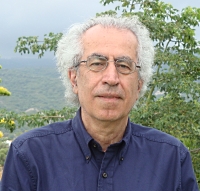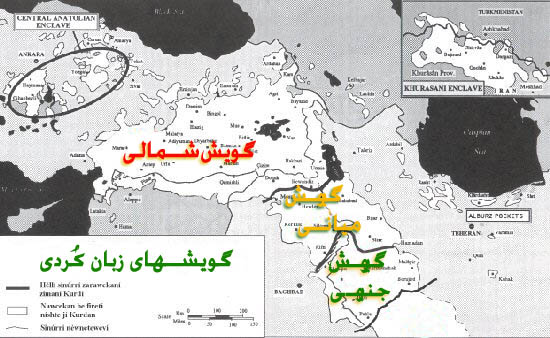Why the aspirated phoneme cases in north Kurdish dialect is not represented in the Unified Kurdish Alphabet system?
Why the aspirated phoneme cases in north Kurdish dialect is not represented in the Unified Kurdish Alphabet system?
Why the aspirated phoneme cases in north Kurdish dialect is not represented in the Unified Kurdish Alphabet system?
Aspirated phonemes may be explained as a voiceless stop (c, k, p, or t, for instance) that is pronounced so forcefully that a distinct puff of air accompanies its utterance.
The aspirated phonemes [c, k, p, t] in Kurmanjí have most likely been borrowed from Armenian. Whether it is a substratum or simply contact-induced phenomenon has not yet been examined. Even many native speakers of the northern Kurdish dialect have major difficulties distinguishing between non-aspirated and aspirated phonemes. Many pioneers in northern Kurdish dialect codification like J. Bedir Xan simply ignored the role of these cases due to variety and non-standard usage of the case among the speakers.
Dr. Michael L. Chyet in his article “Kurmanji Kurdish Lexicography: a Survey and Discussion” in 1997, discuses the difficulties among Kurdish lexographers to establish the correct usage of the aspirated phonemes. Dr. Chyet states that Mr. Baran’s choice as a literate and a native speaker of Northern Kurdish dialect of designation is unfortunate. Had he availed himself more of the works of the Soviet Kurdologists (particularly Bakaev), he would have seen that by marking the non-aspirated member of each pair, he has deviated from established practice, which is to mark the aspirated member. For example, ‘to do’ is generally written kirin (with an unmarked, non-aspirated k), and ‘to buy’ is k’irîn (with an aspirated k which is marked with an apostrophe [k’]). Mr. Baran has reversed this distinction, writing the former as kirin and the latter as k’irîn. For the non-native speaker, much less for the handful of literate Kurmanji speakers, distinguishing between these paired consonants is difficult enough. In switching the system around, Mr. Baran has added another confusing dimension, which is both unnecessary and avoidable.”
Nevertheless, the linguistic Kurdish scholars in former Soviet republics were well aware of these phonemes, because they were used within the Armenian language.
Clearly, to create a universal link among the Kurdish speakers, we need to mask many local nonstandard cases. No ordinary alphabet in the world is “perfectly phonetic,” nor should there be any attempt to create one for Kurdish. To create a “perfectly phonetic” Kurdish alphabet is to clutter it with unnecessary complexity and rigidity that would bring out dialectal differences in the language instead of masking them. We must mask these local differences, not accentuate them, in order to create a common, standard Kurdish alphabet. There will always be a few cases in any language that do not conform to rules set for a simple, but adequate alphabet. Let it be so for Kurdish as well.
However, there is still room for acknowledging these cases in selected publications by choosing local morphological solutions for aspirated phonemes. To add an apostrophe to the aspirated letter will certainly create problems in spell- and grammar -checking computer based software process, but it can be achieved by adding an [h] to aspirated cases where it’s extremely necessary to distinguish between non-aspirated and aspirated cases. For example;
-
- khar = work (kar in all other Kurdish dialects, then kar shall be)
- kar = kid (Mindall, zarok, xort, picék many other varieties of the same word)
-
- phar = share, (besh, let, kute, parce are many other varieties of the same word)
- par = last year
-
- chil = forty, (cil in all other dialect, then cil shall be)
- cil = gluttonous (shil, líq, other varieties of the same word)
-
- tha = fever, (tew, some other dialects)
- ta = cord,
- khirín = to buy, (kirrín, senín, in other dialects, kirrín shall be)
- kirin = to do, (kirdin in other dialects)
Please note that these unique adaptions signify the character of Kurdish language alphabet system only, and the results shall be treated as a norm for Kurdish, and not other languages in which ph, ch, kh, and th might denote a different sound altogether.



